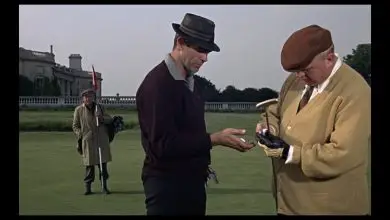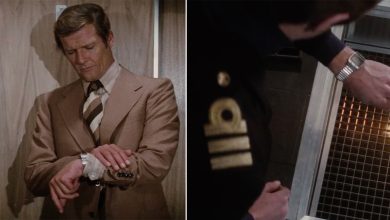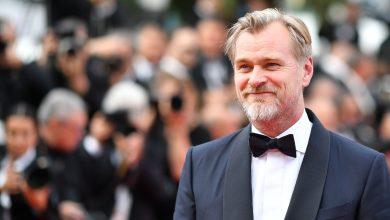How have the values of James Bond changed through the years?

For over six decades, James Bond has been the epitome of a suave and daring secret agent, captivating audiences with his thrilling adventures and charismatic persona. From the early films starring Sean Connery to the gritty reinterpretation by Daniel Craig, the values associated with James Bond have evolved, reflecting the changing cultural landscape and societal expectations. In this article, we will delve into the transformation of Bond’s values throughout the years, exploring how he has transitioned from a charming and invincible spy to a complex and introspective hero. From espionage and sexual prowess to redefining masculinity and impacting popular culture, James Bond’s journey offers a fascinating glimpse into the evolution of a beloved cinematic icon.
Key Takeaways
- James Bond’s values have evolved over time, reflecting the changing cultural and societal norms.
- The portrayal of women in Bond films has transitioned from objectification to more progressive and inclusive roles.
- Bond’s character has redefined masculinity, showcasing vulnerability and emotional depth.
- The influence of James Bond extends beyond the silver screen, impacting popular culture, fashion, and the spy genre.
- Bond’s enduring appeal can be attributed to his ability to adapt to changing times while staying true to the essence of the character.
The Evolution of James Bond: From Espionage to Heroism
Espionage and Adventure
As the first H2 heading suggests, one of the key aspects to explore is how the values of James Bond have transformed throughout the years. Initially, James Bond was portrayed as the epitome of a suave and sophisticated spy, embodying the values of espionage, charm, and adventure. Sean Connery’s portrayal of Bond in the early films, such as “Dr. No” and “Goldfinger,” showcased a character who was unflappable, resourceful, and always in control. Bond’s values revolved around his ability to outsmart his adversaries, use cutting-edge gadgets, and engage in thrilling action sequences that left audiences on the edge of their seats.
Sexual Prowess and Chauvinism
Another significant aspect to discuss is the evolution of Bond’s attitudes towards women. In the early films, Bond was often portrayed as a womanizer, embodying a chauvinistic attitude that was prevalent during the 1960s. Bond’s values, at that time, included a sense of entitlement and objectification of women. However, as societal norms shifted and gender equality became an important topic, subsequent Bond films attempted to present a more progressive portrayal of relationships between Bond and female characters.
Redefining Masculinity
In recent years, there has been a notable shift in the values associated with James Bond, particularly with the portrayal of Daniel Craig in films like “Casino Royale” and “Skyfall.” These movies explored Bond’s vulnerabilities, showcasing a more emotionally complex and introspective character. Bond’s values transformed to encompass resilience, determination, and a struggle with his own inner demons. The portrayal of Bond as a flawed and tormented hero challenged traditional notions of masculinity and added depth to the character, appealing to modern audiences.
Impact on Popular Culture and Society
The ever-changing values of James Bond have had a significant impact on popular culture and society. Bond’s influence can be seen in various domains, from fashion and lifestyle choices to the portrayal of spies in subsequent films and television shows. The character’s appeal and longevity can be attributed, in part, to his ability to adapt to changing times and reflect the values and aspirations of each era.
Frequently Asked Questions
1. How did James Bond’s values change over the years?
James Bond’s values have experienced a noticeable transformation throughout his cinematic journey. In the earlier films, Bond embodied the classic image of a dashing and sophisticated spy, placing a strong emphasis on espionage, adventure, and charm. However, as societal attitudes evolved, so did the portrayal of Bond. In recent years, there has been a shift towards a more emotionally complex and introspective character, challenging traditional notions of masculinity. Bond’s values now encompass resilience, determination, and a struggle with inner demons, reflecting a more nuanced understanding of heroism and the human experience.
2. How has James Bond’s treatment of women evolved?
The depiction of women in James Bond films has evolved significantly. In the early movies, Bond was often portrayed as a womanizer, reflecting a chauvinistic attitude prevalent at the time. However, as society’s perception of gender equality changed, subsequent Bond films aimed to present a more progressive portrayal of relationships between Bond and female characters. Recent movies have featured strong, independent women who play integral roles in the storylines, moving away from the purely objectified and disposable roles seen in the past. While the evolution is ongoing, it is clear that Bond’s treatment of women has shifted towards a more respectful and inclusive approach.
3. How has James Bond influenced popular culture?
James Bond has had an immense influence on popular culture, leaving an indelible mark in various domains. From fashion to technology, the Bond franchise has inspired trends and set standards. The character’s suave style, tailored suits, and iconic accessories have become synonymous with sophistication and elegance. Bond’s use of cutting-edge gadgets and futuristic technology has also had a lasting impact on the portrayal of spies in subsequent films and television shows. Furthermore, the Bond films have popularized the spy genre, captivating audiences and paving the way for numerous spy-themed stories in popular culture.
4. Who were the notable actors to portray James Bond?
Several actors have brought James Bond to life on the silver screen, each leaving their unique mark on the character. Sean Connery was the first to portray Bond, setting the benchmark with his charismatic portrayal. He was followed by George Lazenby, who had a brief but memorable stint as Bond. Roger Moore brought a more lighthearted and humorous approach to the role, while Timothy Dalton added a darker and more intense portrayal. Pierce Brosnan infused Bond with a suave and polished demeanor, and finally, Daniel Craig brought a gritty and realistic interpretation to the character, captivating audiences with his emotional depth and vulnerability.
5. What impact did James Bond have on the spy genre?
James Bond revolutionized the spy genre, redefining the archetype of the secret agent. The character introduced a perfect blend of sophistication, action, and intrigue, capturing the imagination of audiences worldwide. The Bond franchise raised the bar for spy films, setting a standard for thrilling action sequences, clever gadgets, and high-stakes espionage. Many subsequent spy films have sought to emulate the success and style of Bond, leading to the proliferation of the genre and the creation of numerous iconic spy characters.
6. How did James Bond become a cultural icon?
James Bond’s status as a cultural icon can be attributed to several factors. The character embodies a timeless charm and sophistication that transcends generations. Bond’s ability to adapt to changing times and reflect the values of each era has contributed to his enduring appeal. The films’ success, combined with the iconic theme music, memorable catchphrases, and stylish imagery, has solidified Bond’s position as a global icon. Moreover, the longevity of the franchise, spanning over six decades, has ensured that Bond remains firmly entrenched in popular culture.
7. What are some memorable villains in the James Bond films?
The James Bond franchise is renowned for its memorable villains, who have become an integral part of the series’ lore. From the menacing Dr. No and the enigmatic Blofeld to the sadistic Auric Goldfinger and the charming Ernst Stavro Blofeld, Bond has faced off against a diverse array of adversaries. These villains are often defined by their unique traits, such as their elaborate schemes, physical prowess, or diabolical intellect. The portrayal of these iconic villains has added depth and excitement to the Bond films, creating memorable conflicts that have resonated with audiences.
8. How has James Bond impacted the perception of British culture?
James Bond has played a significant role in shaping the perception of British culture on the global stage. The character’s quintessentially British traits, including his refined manners, love for bespoke tailoring, and appreciation for luxury, have become synonymous with the image of British sophistication and class. The films have showcased various iconic British locations, such as London, Scotland, and the English countryside, further cementing the connection between Bond and British culture. Additionally, Bond’s association with the British intelligence agency MI6 has contributed to the mystique surrounding British intelligence services.
9. Has James Bond always been associated with specific brands?
Throughout the Bond films, various brands have become closely associated with the character, contributing to the franchise’s commercial success and adding to the allure of the world of James Bond. The most notable brand association is with Aston Martin, the luxury British car manufacturer, which has provided Bond with his iconic vehicles. Other brands, such as Omega watches and Tom Ford suits, have also had prominent placements in the films, further solidifying the association between Bond and luxury. These brand partnerships have become an integral part of the Bond experience, enhancing the character’s image of sophistication and style.
10. Will James Bond continue to evolve in the future?
As with any iconic character, the future of James Bond holds both excitement and uncertainty. The franchise has proven its ability to adapt and reinvent itself over the years, ensuring its continued relevance. Given the changing cultural landscape and shifting values, it is likely that Bond will continue to evolve to reflect the attitudes and expectations of audiences. The character’s enduring popularity and the ongoing demand for captivating spy stories suggest that James Bond will remain a beloved figure in popular culture, leaving an indelible mark on generations to come.
Conclusion
In conclusion, the values of James Bond have experienced a remarkable journey of transformation. From the suave and debonair spy of the past to the emotionally complex and introspective hero of the present, Bond’s evolution reflects our changing perceptions of heroism, gender dynamics, and cultural ideals. As the world evolves, so does our demand for characters who resonate with our aspirations and values. James Bond’s ability to adapt while remaining an icon of style, adventure, and intrigue is a testament to his enduring appeal. As we eagerly await the next chapter in the Bond franchise, we can be certain that the values of this beloved character will continue to captivate and inspire audiences for years to come.








